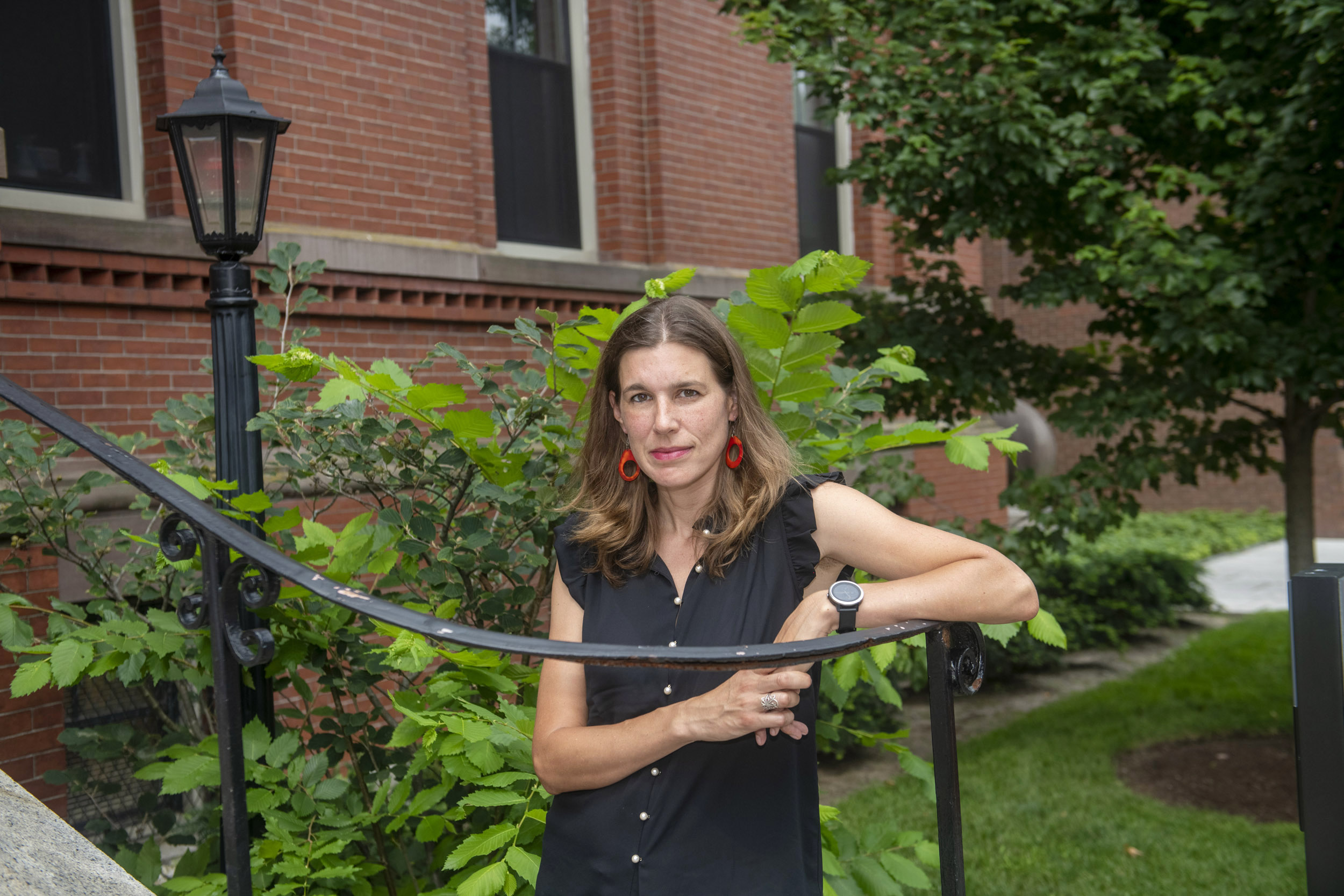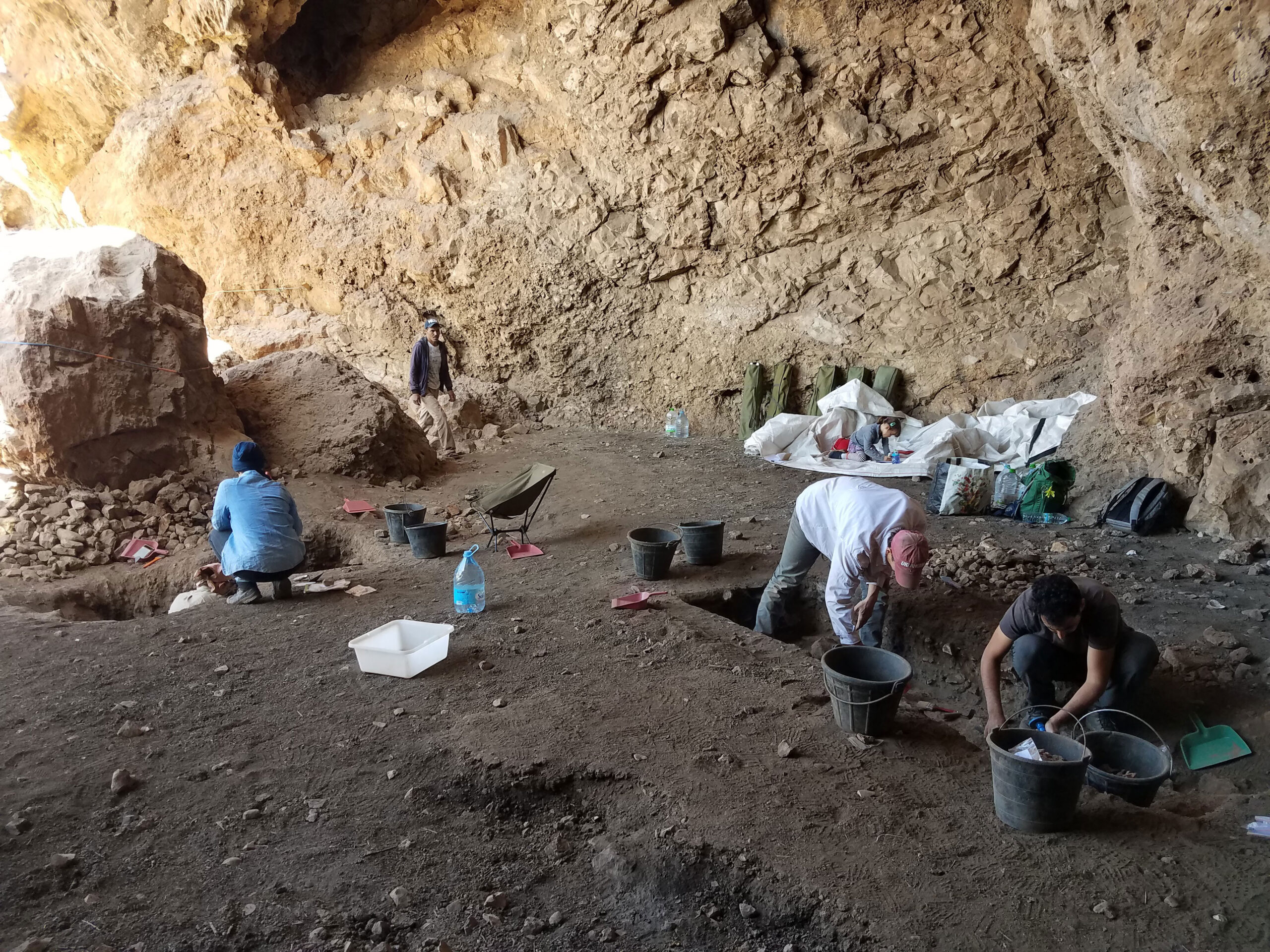Hearth and home — in Stone Age

Jon Chase/Harvard Staff Photographer
New Anthropology Professor Amy Elizabeth Clark researches the evolutionary role of human living spaces
When academics talk about early modern humans, especially those living way back in the Lower Paleolithic, the conversation frequently turns to hunting. When did our species start eating meat? What were the first animals we killed and consumed?
Amy Elizabeth Clark, a newly appointed assistant professor of anthropology, understands why. “A big part of our record comes from stone tools, and a certain number of those tools are weapons,” she said.
But Clark gravitates to other varieties of Stone Age artifacts. A specialist in the earliest reaches of the archaeological record, Clark is particularly fascinated by the first iterations of designated living spaces. Motivating this interest is what Clark calls a “feminist approach” to studying human history. “It’s a way of forwarding women when we think about the past,” she explained.
Clark’s interest dates to her time as an anthropology major at New York University. Upon earning her bachelor’s in 2005, she leapt at the opportunity to participate in excavations of early rockshelters in the southwest of France.
Once inhabited by the first Homo sapiens in Europe, these sites were “really integral to my thinking about the origins of the home,” Clark said. “The walls were decorated with engraved animals. They had these hearth-like features configured in a very specific way, and that configuration was repeated at several different sites. It seems they had a blueprint for what makes a home.”
Clark received her doctorate at the University of Arizona, doing her dissertation on some open-air Neanderthal sites, also located in southwestern France. It’s unclear how long these spaces were occupied. Nevertheless, Clark found them comparatively chaotic, littered with stone tools and bones. “You can see that to a certain degree in the modern human sites,” she said, “but there’s a greater sense of organization and also decorative elements.”

Next came postdoctoral fellowships and research opportunities with France’s Fyssen Foundation and the University of Oklahoma. While co-authoring papers on the early harnessing of fire — a central feature of the emerging human home — Clark also broadened the geographical scope of her research. “I had thought a lot about the differences between Neanderthals and modern humans,” she explained. “What I really want to know is how modern humans evolved — what happened in Africa that brought about these changes.”
This inspired her current involvement with two excavations in Morocco, both located in an understudied area along the southwestern Atlantic coast (and both spared by the recent earthquake). One of those sites is Jorf el Hamam, a Middle to Late Stone Age rockshelter excavation where Clark serves as co-director. Unearthed there last year was a series of cemented hearths, all lined up toward the back of the structure.
Today, Clark is settling into her first semester as an assistant professor following three years as a College Fellow and lecturer. In 2020, she introduced the popular course “Game of Stones: The Archaeology of Europe from Handaxes to Stonehenge.”
She’s also set about writing a book on human living spaces. “Archaeologists are kind of scared to say words like ‘home,’” she noted. “We don’t want to put too much meaning in them.”
That changed for Clark during the pandemic, amid the long months of socially isolating with her partner and two children. Suddenly she saw an opportunity to articulate the home’s defining role across human history.
Actually, the book will go back further than that.
“Primates build sleeping platforms — a chimpanzee, for example, will make a kind of nest in the tree,” Clark explained. Our hominid ancestors also slumbered on high branches. Clark will start the story there in exploring how the nature of home changed alongside everyday life. When did humans start sleeping on the ground? When did we start eating and sleeping in one place? At what point did homes assume their crucial familial and social role?
Because homes are so closely associated with women, Clark argues, they were too often “demoted” by past generations of academics. Her mission is to change that for future anthropologists and archaeologists, inspiring fresh interest and new lines of inquiry. As she put it, “I’m working to elevate the home and its importance to human evolution.”




